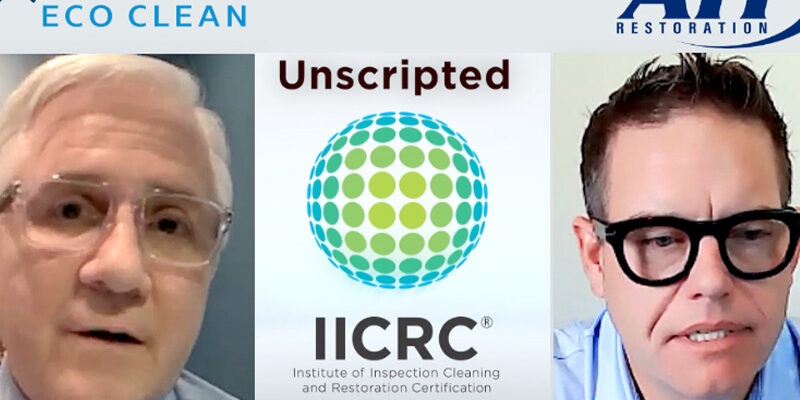Straight Talk!: Bringing Diversity and Inclusion Initiatives to Life [Video]

NORTHBROOK, Ill.—November 5, 2020—In this edition of Straight Talk! with Jeff Cross, Scott Tackett, a business development advisor with Violand Management Associates (VMA), outlines the importance of diversity and inclusion in the workplace and how to create initiatives that really work.
Tackett clarifies from the start that this important issue is not just a “nice idea” or an attempt to be “politically correct.” “This is the world in which we live. This is about developing competitive advantage,” Tackett states, going on to explain that it simply makes good business sense to develop an awareness of the world we are living in, which is a diverse one.
Definitions
Diversity and inclusion are terms that often get lumped together, but they are actually two different ideas. Tackett explains that diversity is “the ways in which people are different.” Specifically, diversity is the “values, beliefs, experiences, backgrounds, preferences, and behaviors that all of our employees bring to the workplace.” Diversity is a positive force in helping businesses to succeed and grow if employers capitalize on the diversity of their employees by allowing them to contribute to the company in the best way they possibly can, given their unique experiences, values, and skills.
Inclusion is the process of creating a culture that engages these differences. “The culture of inclusion is where everyone feels—no matter what their lifestyle is, no matter what their backgrounds are, they belong in this organization.” Tackett summarizes that inclusion provides the culture and environment that allows employees to feel safe and valued for their diversity, which then allows them to use their unique experiences and perspectives to contribute to the company.
Growing importance
Diversity and inclusion have always been important issues for companies and institutions, but they are certainly more prominent in our social consciousness today than they have been in the past. Tackett identifies three main reasons this is an issue of growing importance:
- There are more women in the workplace. In 2019, about 47% of the workforce was female.
- There are more minorities in the workplace. Tackett explains that in 2000, 72% of the workforce was white and 28% included all minorities. Based on projections from the 2020 census, 37% of the workforce is now made up of minorities.
- There are more older workers in the workplace. Tackett cites these statistics: In 1950, one in seven workers was over the age of 55; in 2010, one in five was over 55; in 2030, projections suggest that one in four workers will be over 55.
Based on these trends, our workplaces will only continue to become more diverse in gender, race, age, and many other factors, so creating a culture of inclusion is important today.
Successful initiatives
When it comes to creating diversity and inclusion initiatives, Tackett is clear that it’s about setting goals for intentional recruitment of diverse candidates, not compromising hiring standards. “First and foremost, hire the best and most qualified candidate,” Tackett says, but an awareness of diversity should also be part of the process. Tackett notes that “affirmative action plans” are often misunderstood as quotas, but what they truly are is a plan to collect data on the makeup of your workforce and set goals for where diversity could be improved. Employers should consider how they could attract more women or minorities for positions in their companies.
Hiring with diversity in mind is only the first step. “It’s not just about hiring a candidate who is diverse; it’s more about once we hire them, how are we going to keep them in our workplace,” Tackett explains. This is where inclusion initiatives come in, and Tackett has a number of suggestions for employers on how to create a culture of inclusion, acceptance, and support in their companies:
- Create a formal, internal harassment and discrimination policy. This builds a culture of trust and accountability into the company and helps employees feel safe to be themselves at work and confident that their diversity of thought is valued. It also sets the expectation for all employees that instances of discrimination or harassment are not tolerated, should be reported, and will be addressed. Employees should feel safe to discuss any such instances with managers and owners.
- Provide an employee assistance program (EAP). This is an outside service that employers provide their employees as a benefit, and it includes counselors and experts in numerous areas that can offer help to employees on a wide range of issues, such as mental health, legal assistance, financial resources, and work/life resources.
- Provide formal diversity training for all employees on an annual basis. Tackett stresses that this is different from sensitivity training. Formal diversity training is about raising awareness of our different experiences and lifestyles and is an opportunity to discuss how we treat one another at work and how we create an atmosphere where all employees feel safe and accepted.
- Start at the top; owners and managers must be accountable to ensure a workplace of respect. Tackett clarifies that, in addition to maintaining high standards of performance from employees, managers must also monitor the way employees treat each other in the workplace, regardless of rank.
- Make diversity part of your company’s strategic plan. Embedding diversity goals and initiatives into your strategic plan ensures continued growth and success of these initiatives moving forward. Tackett also stresses that the strategic plan shouldn’t stop at the hiring process but should include the inclusion initiatives and monitoring that will ensure all employees—regardless of age, gender, culture, race, or lifestyle—feel welcome in the company.
- Develop relationships with minority organizations in the community. Tackett explains that there are many business organizations dedicated to promoting leadership and economic advancement for specific minority groups. These organizations often provide networking, education, training, and support, and they can be a resource for companies committed to hiring diverse staffs and creating a culture of inclusion.
Challenges
One of the biggest challenges when implementing diversity and inclusion initiatives is getting past our natural fidelity to the way we have always done things. “We’re our own worst enemy,” Tackett states. He reveals that when he first went into human resources many years ago, “we were second- and third-generation employers, so we had grandfathers, sons, and grandsons, and we were all pretty much the same demographic. We’ve got to put that [way of doing things] aside.” Tackett explains that this process must be intensely self-reflective, with an intentional and continuous effort to evaluate and disrupt our prejudices, biases, and stereotypes in order to prioritize a diverse and inclusive workplace—and we must hold each other to these standards.
Final thoughts
Tackett stresses this is an important topic that we don’t address enough in the cleaning and restoration industry, but it is paramount to the industry’s success. In striving to keep his eye on the goal for diversity and inclusion, Tackett remembers this definition of a diversity initiative from Roosevelt Thomas: “A diversity initiative is a comprehensive managerial process for developing an environment that works for all employees.”
“That’s what we’re trying to accomplish,” Tackett says.
Watch the complete episode of Straight Talk! with Jeff Cross below, and find more Straight Talk! episodes on cleanfax.com. Take part in the engaging online conversations on industry topics by joining the Straight Talk! Facebook group today.
View the video on the Cleanfax YouTube channel here.












